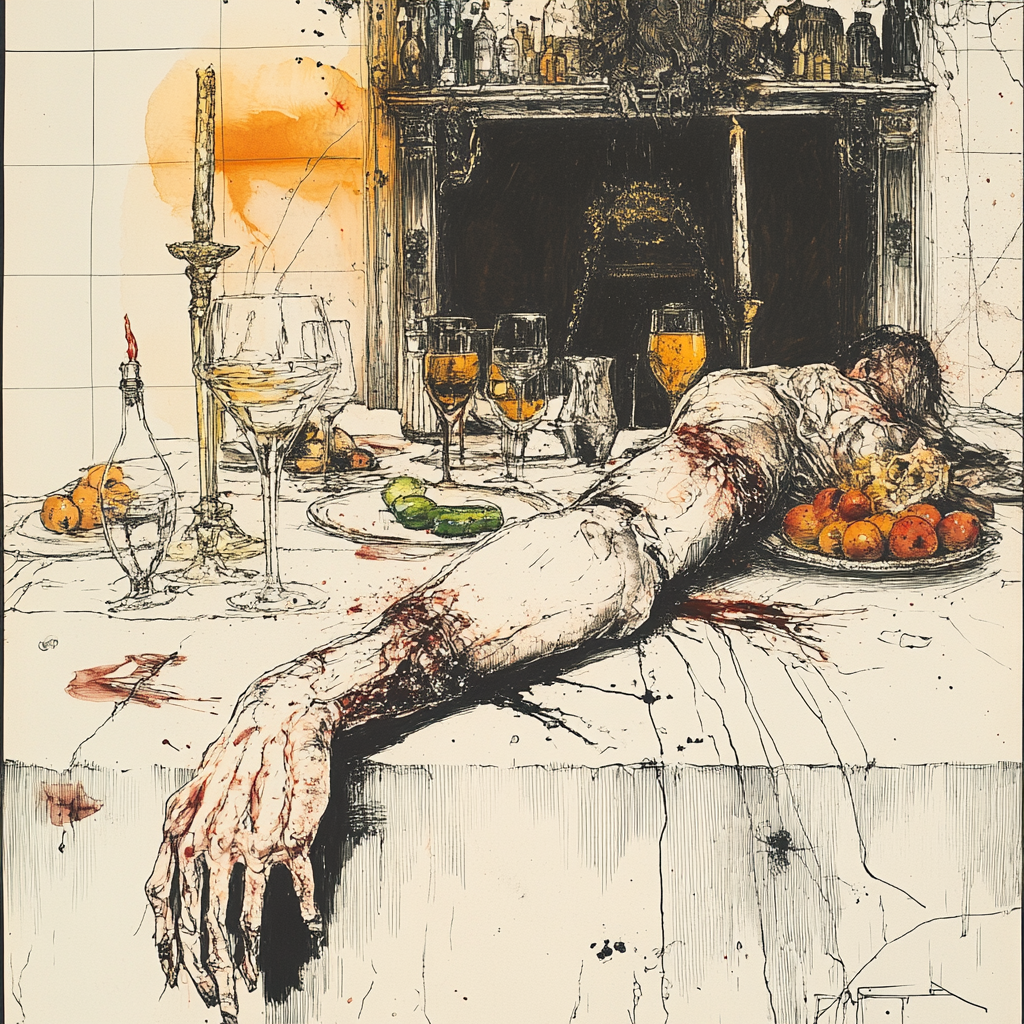The 10 Best Uses Of Severed Body Parts In Cinematic History
The severed limb is having a moment. If you’ve stumbled upon Apple TV+’s "Bad Monkey" (2024), you’ll know that the story kicks off with a gruesome discovery: a lone human arm, found in the Florida Keys, setting off a tangled web of mystery and corruption. A fine, noble entry in the grand tradition of disembodied human flesh in cinema, but make no mistake—this isn’t some dime-store horror gimmick. Severed body parts have been prowling the silver screen for decades, lurking in shadows, making statements, playing punchlines. From dark horror to highbrow art-house, even slapstick comedy, these mutilated appendages have haunted and thrilled audiences with a macabre, often absurdist flair. Here, we raise a toast to the ten greatest moments where a stray body part was more than just a prop—it was a storytelling device, a nightmare, a joke, a grotesque exclamation point on the screen’s bloody canvas.
1. The Hand That Won’t Die – "The Beast with Five Fingers" (1946)
Before "Evil Dead II" made disembodied hands famous, Peter Lorre starred in this eerie classic where a severed hand refuses to rest. The film follows a pianist whose murderous spirit seems to live on through his severed hand, which crawls around strangling people in a flickering, black-and-white fever dream. The director played up the nightmarish horror of it all—long, exaggerated shadows stretching across the walls, the sound of fingers scratching wood, and Lorre’s sweaty, bulging eyes making audiences gasp in heart-stopping paranoia. It’s horror done right, crafting a spectral menace out of something as simple as a hand left with unfinished business.
2. The Middle Finger of Defiance – "Monty Python and the Holy Grail" (1975)
Never has bodily dismemberment been played for such absurdist glory. When King Arthur (Graham Chapman) encounters the Black Knight (John Cleese), what follows is one of the most famous comedic battles in film history. Each limb is hacked off with increasing absurdity, yet the stubborn knight insists, "’Tis but a scratch!" The scene is an enduring symbol of British comedy’s gleeful embrace of the ridiculous. More than just a gag, the Black Knight’s refusal to acknowledge reality in the face of total dismemberment became a metaphor for blind persistence, making it one of the most iconic—and hilarious—severed limb moments in cinema.
3. The Hand That Hates Its Owner – "Evil Dead II" (1987)
A severed hand as a full-fledged character? Only Sam Raimi could pull that off. When Ash (Bruce Campbell) is forced to cut off his own possessed hand with a chainsaw, it doesn’t just die—it scurries around like a demonic rodent, flipping him off, smashing plates over his head, and setting up elaborate Three Stooges-style ambushes. The slapstick horror of the scene cemented "Evil Dead II" as a masterclass in practical effects and twisted comedy. Audiences howled as much as they gasped, watching Campbell’s unmatched physical comedy duel with his own wayward limb in a grotesque ballet of chaos.
4. The Severed Ear That Started It All – "Blue Velvet" (1986)
David Lynch doesn’t do anything by accident, and the detached ear that Jeffrey Beaumont (Kyle MacLachlan) discovers in a field is the ultimate tone-setter. Rotting, insect-infested, and horrifyingly real, it isn’t just a macabre curiosity—it’s the key to unlocking the nightmarish underbelly of small-town America. That ear serves as a portal, dragging the audience into a world of sadism, voyeurism, and Dennis Hopper’s gas-huffing insanity. Lynch’s genius was in using something as mundane as an ear to shatter the illusion of normalcy, reminding us that horror is often hiding just beneath the surface.
5. The Most Famous Toe in Film – "The Big Lebowski" (1998)
You can’t talk about severed body parts without giving a nod to the toe—that fucking toe! When nihilists send Jeffrey Lebowski (Jeff Bridges) a severed toe in a desperate bid to extort ransom money, it becomes a surreal, darkly comic turning point. Walter Sobchak (John Goodman) dismisses the whole thing with a flippant "I can get you a toe, believe me. There are ways, Dude." This dismemberment plays into the Coen Brothers’ love for mixing menace with absurdity. It’s grim, sure, but it’s also a joke about how easily crime spirals into incompetence in their world of beautifully flawed losers.
6. The Floating Head That Sank the Audience – "Jaws" (1975)
It’s a head, not a hand or foot, but its impact is undeniable. When Hooper (Richard Dreyfuss) inspects a wrecked boat, a severed head suddenly floats into view, its lifeless eyes wide with terror. No music cue, no foreshadowing—just pure, visceral shock. One of the great jump scares of the Seventies. Spielberg understood that horror isn’t about gore; it’s about timing. The audience didn’t just jump; they launched from their seats (at least I did). That head didn’t just belong to a victim—it was a statement: this shark is beyond anything you’ve imagined.
7. The Chopped-Off Handshake – "Kill Bill: Vol. 1" (2003)
Quentin Tarantino knows how to make bloodshed stylish, and O-Ren Ishii’s (Lucy Liu) right-hand woman, Sofie Fatale (Julie Dreyfus), learns that the hard way. When The Bride (Uma Thurman) slices off her arm in the House of Blue Leaves, it’s not just revenge—it’s a declaration of war. The geyser of blood, the stunned silence of the yakuza, and the way Tarantino lets the moment breathe all turn this into high art. This severed limb isn’t just a casualty—it’s a symbol of retribution, as precise and poetic as the film’s samurai influences.
8. What’s in the Box? – "Se7en" (1995)
A severed head is the emotional sledgehammer in David Fincher’s "Se7en." In the film’s gut-wrenching climax, Detective Mills (Brad Pitt) discovers that John Doe (Kevin Spacey) has delivered his wife’s head in a box. The scene is infamous for what it doesn’t show—Fincher keeps the camera on Pitt’s reaction, letting audiences imagine the horror inside. The severed head, unseen yet utterly present, is the film’s ultimate gut-punch, cementing "Se7en" as one of the bleakest thrillers of all time.
9. Luke’s Hand – "The Empire Strikes Back" (1980)
In a galaxy far, far away, cinematic history was made with the single stroke of a crimson lightsaber. Luke Skywalker, fresh-faced hero and eager Jedi-in-training, squares off against Darth Vader in a battle that would redefine him forever. The fight is brutal, claustrophobic, and operatic in scale—blades clash, tempers flare, and then, in one devastating moment, Vader slices clean through Luke’s wrist. The severed hand, clutching his lightsaber, spirals into the abyss, marking the end of Luke’s innocence. This isn’t just a wound; it’s a rite of passage, a baptism in pain. George Lucas knew the weight of this moment, cutting to Luke’s wide-eyed agony as the dark truth is revealed—Vader is his father. The loss of a limb becomes the visual metaphor for the loss of everything Luke thought he knew. A defining moment in cinema, forever burned into the pop culture lexicon.
10. The Severed Arm – "127 Hours" (2010)
Danny Boyle didn’t pull punches when bringing Aron Ralston’s real-life ordeal to the screen. James Franco, playing the lone adventurer, finds himself pinned under an immovable boulder, trapped in a canyon with no hope of rescue. The tension builds unbearably as Ralston exhausts every option—tugging, chiseling, bargaining with an indifferent god. Then comes the decision that separates survival from death: amputation. The scene is pure, unflinching agony. Boyle doesn’t look away—Ralston saws through muscle and tendon, breaking his own bone with a dull blade, the score dropping to raw, visceral silence. The camera lingers on every nerve-wracking moment, forcing the audience to feel the claustrophobic terror, the desperation, the unbearable triumph of survival. Some viewers fainted. Others looked away. But none forgot it. This wasn’t just a severed limb—it was the embodiment of human willpower, a scene that turned a tragic ordeal into a masterstroke of cinema.


